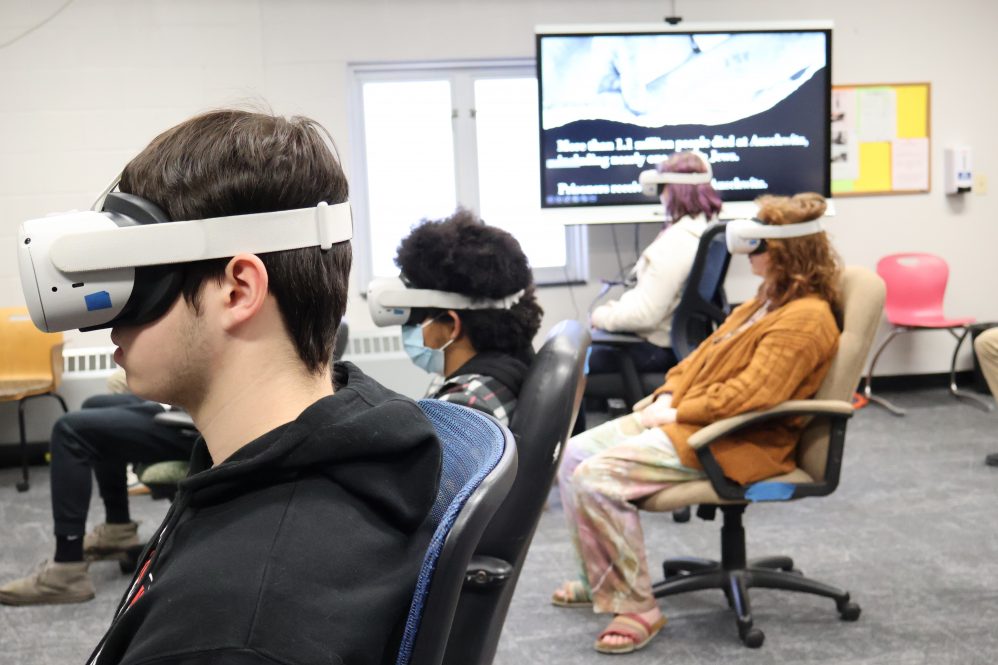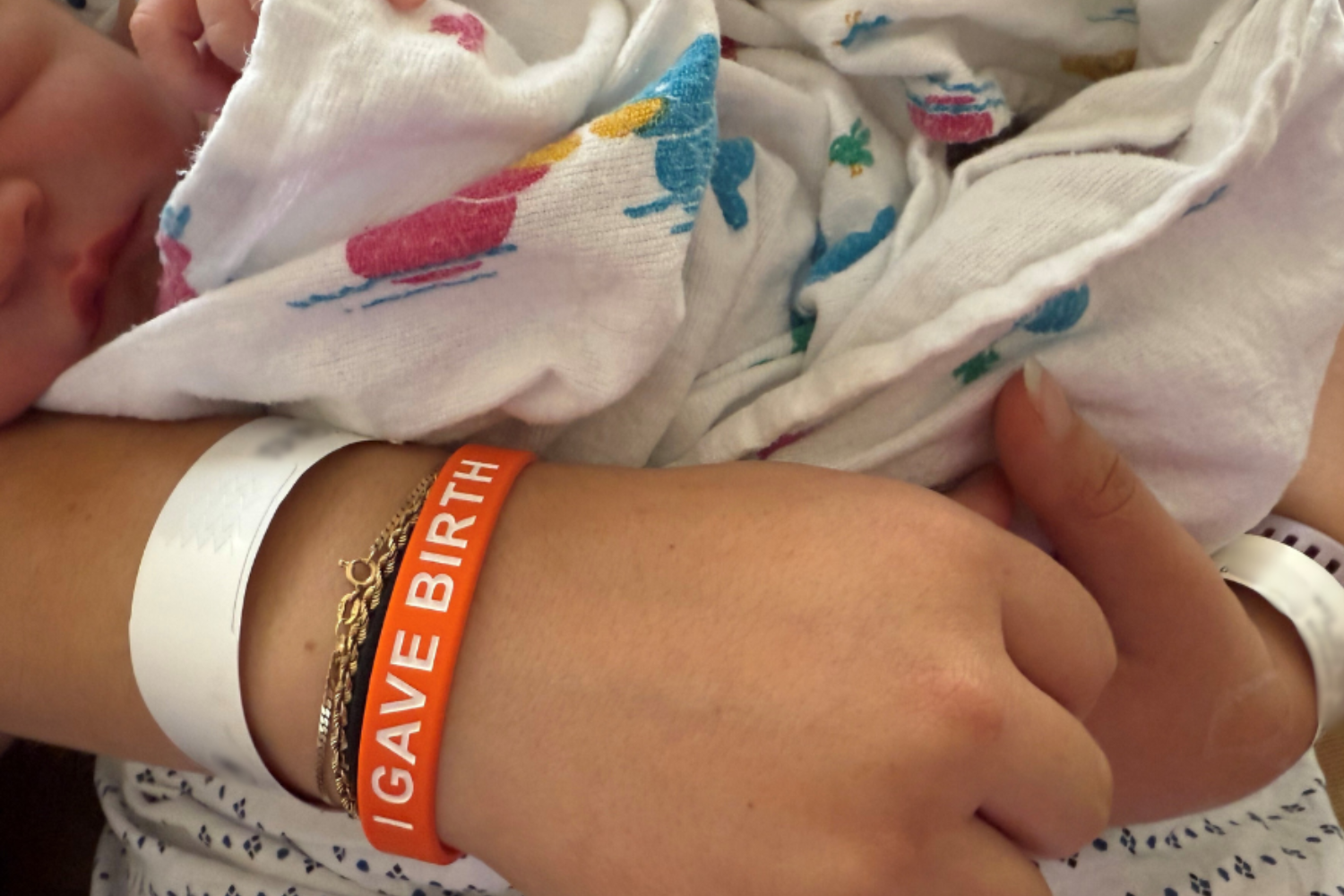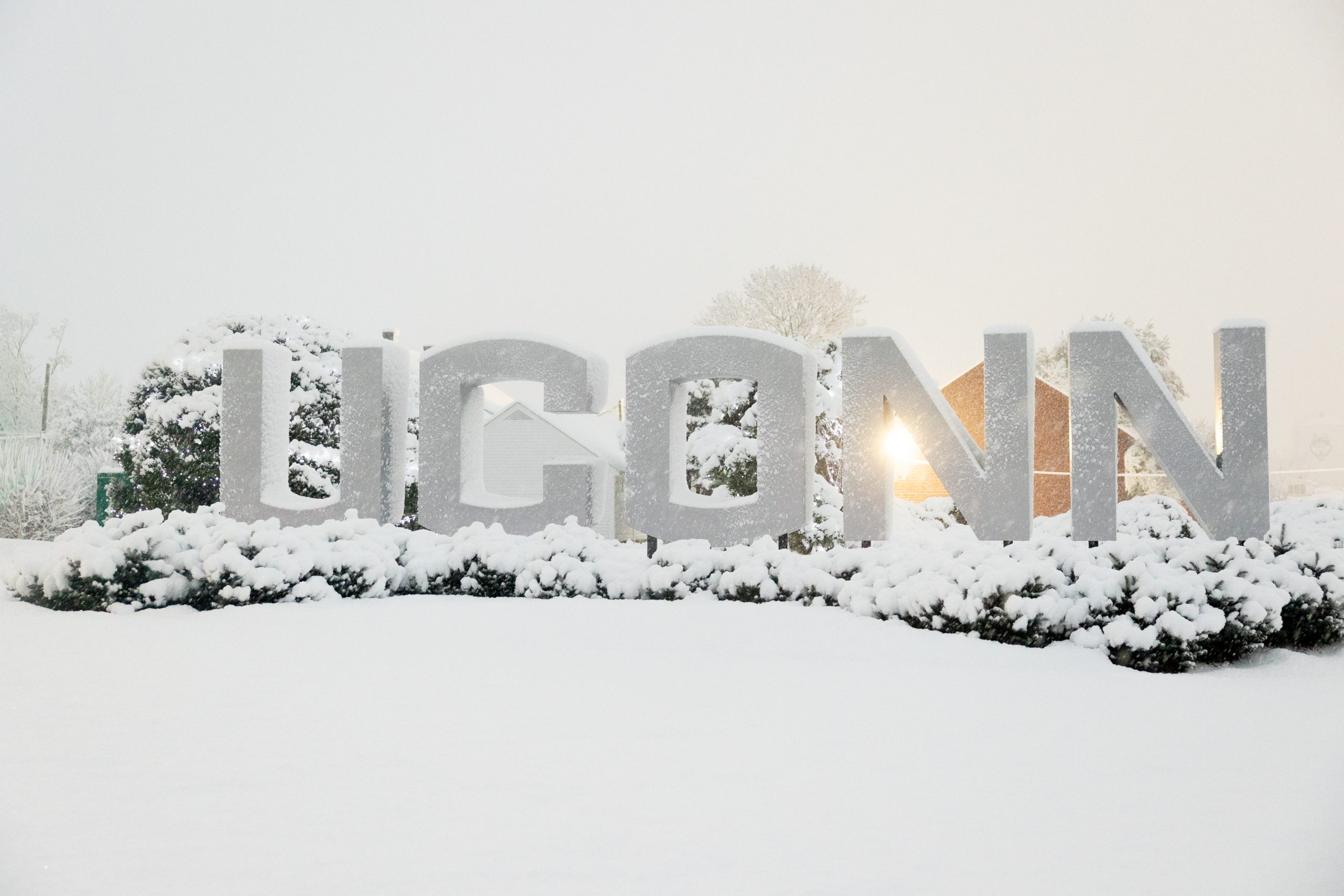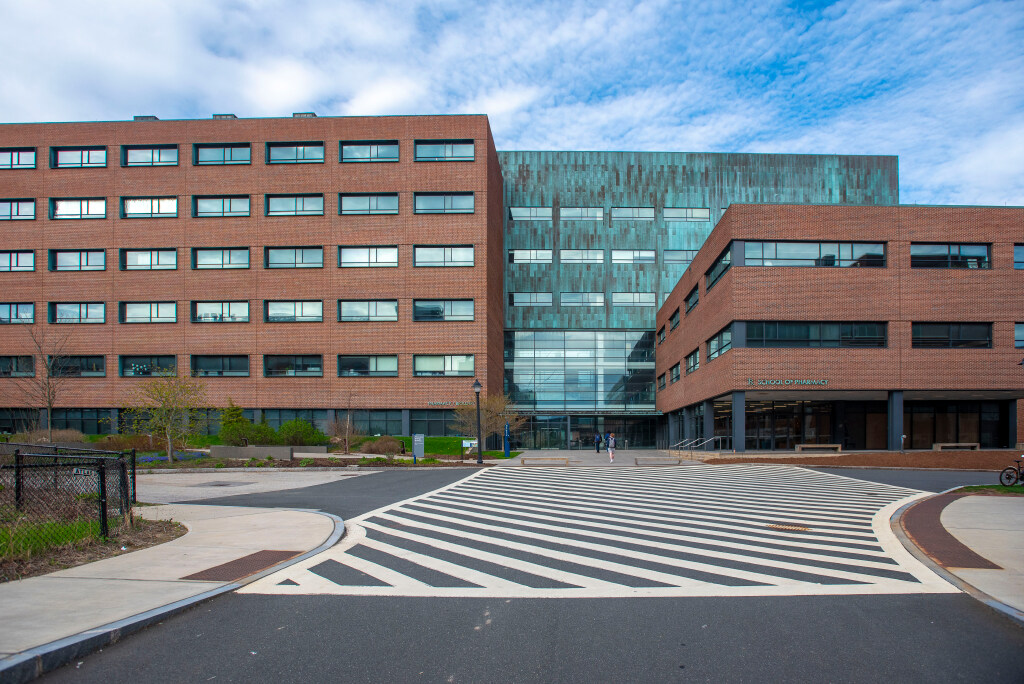Students at E.O. Smith High School in Storrs took part in a program last year that taught lessons about the Holocaust and larger issues of identity thanks to the efforts of a professor and students from UConn’s Neag School of Education. The hope is that this program will be offered to other Connecticut high schools as funding is secured.
“Breaking Bias and Creating Community” is an interdisciplinary and customized experience that features interactive Holocaust survivor testimony, a virtual reality tour of the Auschwitz Concentration Camp, and a photo exhibition that focuses on the issues of identity with local community members.
“Antisemitism, Holocaust denial, and racism are no longer hidden in the margins in this age of social media, spewed by fringe hate groups,” says Alan Marcus, a professor in the Department of Curriculum and Instruction who brought the program to E.O. Smith, which borders the UConn campus and serves students in several towns near the University. “By promoting empathy and creating community, and thus addressing racism and antisemitism, this project seeks to counter societal fragmentation.”
A model for bringing the program to E.O. Smith came the year before when Common Circles, a nonprofit dedicated to reducing bias through interactive experiences, designed a similar project for schools in White Plains, New York. Marcus then got to work to create something similar, which resulted in the program at E.O. Smith.
“This effort at E.O. Smith really began in 2017,” says Joe Goldman ’06 (ED), ’10 MA, a social studies teacher at the school. “Teachers started noticing that students were having difficulty having conversations with each other and there were more disagreements. There were more issues with bias, discrimination, bullying, and stereotyping. It created a level of toxicity.”
E.O. Smith held a symposium on these issues with The Dodd Center for Human Rights at UConn. Goldman then began conversations with Marcus, who he knew as a professor at UConn, community member, and parent of an E.O. Smith student, which then led to the creation of “Breaking Bias and Creating Community” at the school.
The program at E.O. Smith consisted of three parts. There was an interactive experience with Holocaust survivors called IWitness; a virtual reality experience, The Journey Back, that is a tour of a Holocaust concentration camp; and a photography exhibition featuring E.O. Smith teachers and staff members that showed their life away from school and their outside interests.
IWitness is created and funded through the Shoah Foundation at the University of Southern California and participants can ask questions and receive real-time responses from recorded video interviews with Holocaust survivors and others.
The Journey Back is a traveling exhibition from the Illinois Holocaust Museum and Education Center that includes two virtual reality films that follow the experiences of two Holocaust survivors. The films are viewed in 360 degrees with virtual reality headsets and takes viewers from the survivors’ hometowns in Europe to the sites where they were imprisoned by the Nazis.
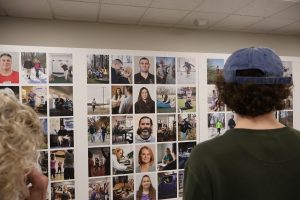
The photo exhibition, titled “The Stories We Live,” included images from local photographer Greg Miller and was funded by Common Circles.
Almost every student in the E.O. Smith population took part in at least one section of the program, and there were also opportunities for faculty, staff, and local residents to engage. E.O. Smith students were trained to lead discussions at the community events.
Interns from the Neag school assisted E.O. Smith teachers with the presentations for the high school students.
Sponsors for the three-part exhibit and community engagement included Reservoir Financial of Mansfield and the Bernstein and Ferguson families along with support from the E.O. Smith Foundation
“The students [at E.O. Smith] were engaged and immersed in this project,” says Julia March ’23 (ED), ’24 MA, who served as one of the UConn student interns in the project and is from New Milford. “The students had a lot of strong reactions and some students actually needed tissues, which the school superintendent brought in, because she needed some herself.”
“I can also point to the photo series, where students saw their teachers in different aspects of their lives. The students really were engaged and interested in the outside lives of their teachers. I think it really strengthened the community a lot,” she added.
March and Faith Gately ’23 (ED), ’24 MA, another one of the UConn student interns with the program, both believe this experience will help them in their teaching careers, which both begin this fall.
“It really prepared us in a lot of different ways,” says Gately, a native of Stonington. “We were able to work with many different departments at E.O. Smith, communicating with different teachers, members of the administration, and community members. We did a lot of organizing, planning, and facilitating, which was impactful in terms of how we want to engage the community in the future.”
